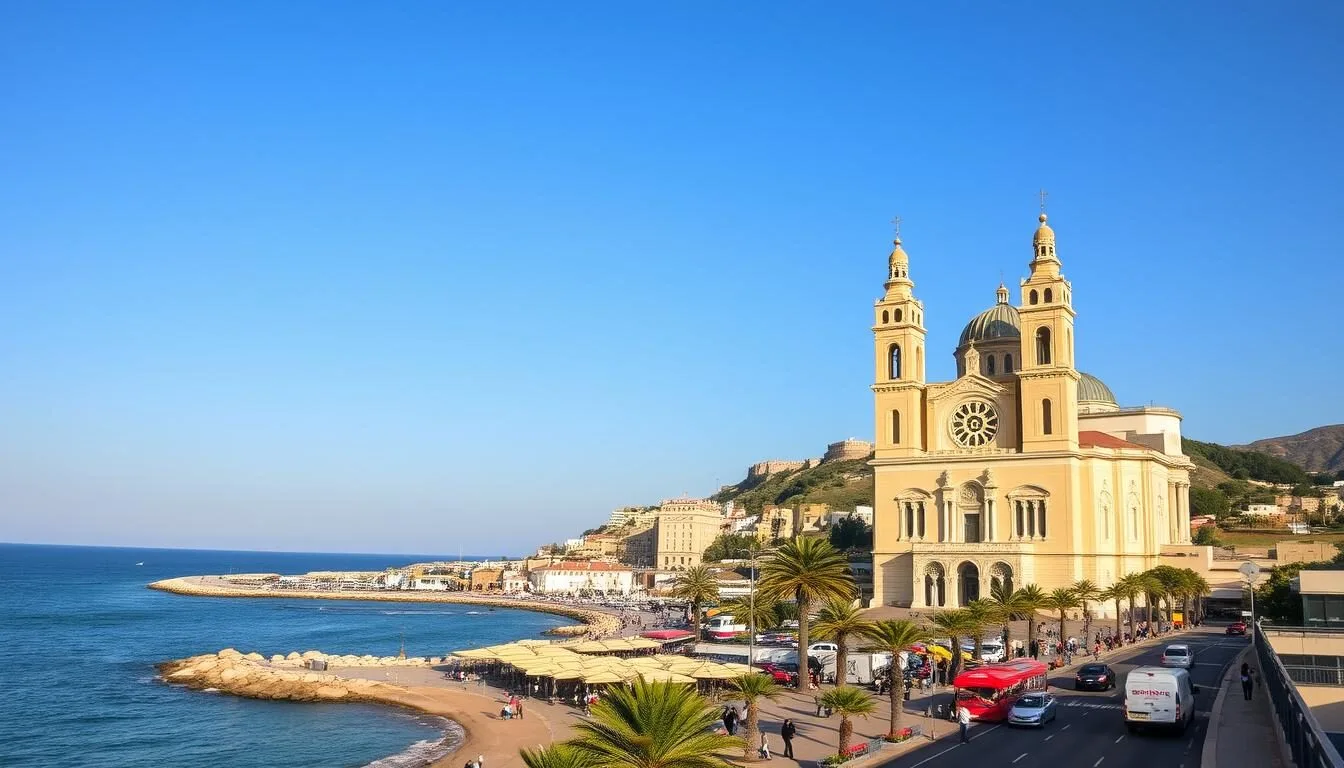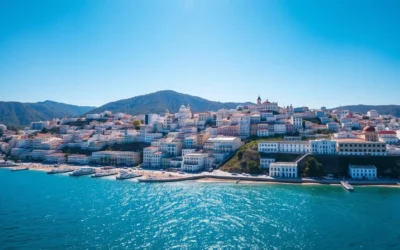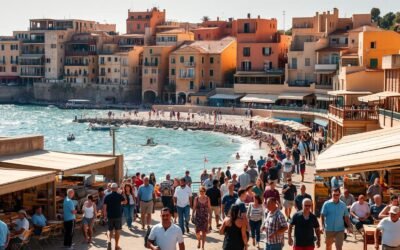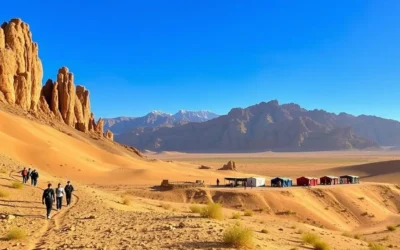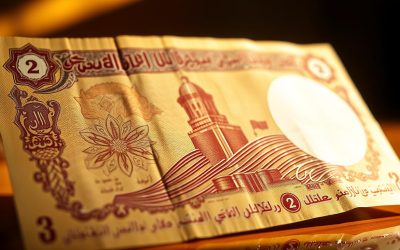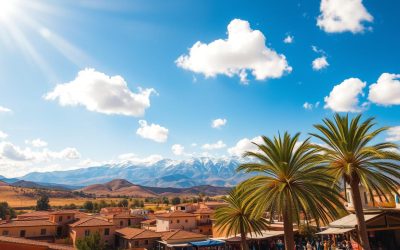✓ Accommodations✓ Flights✓ Rental Cars
Nestled on the Mediterranean coast, Oran is a vibrant port town that boasts a rich cultural heritage, blending Hispano-Moorish and French colonial influences. As you step into this captivating city, you’ll uncover the layers of its fascinating history, shaped by multiple civilizations, including the Romans, Spaniards, Ottomans, and French.
This destination is known as the “Pearl of Western Algeria” and is considered one of the most touristic spots in the country. As you explore Oran, you’ll experience its unique position as the “Paris of Algeria” with its more liberal society and vibrant cultural scene.
From historic landmarks to cultural hotspots, Oran offers a plethora of experiences. You’ll discover why this city is a must-visit, with its walkable city center, old town areas, and attractions like Fort Santa Cruz, all waiting to be explored.
Discovering the Pearl of Western Algeria
As you step into Oran, you’ll uncover the rich tapestry of its history. The city’s complex past, marked by various ruling powers, has created a unique cultural landscape.
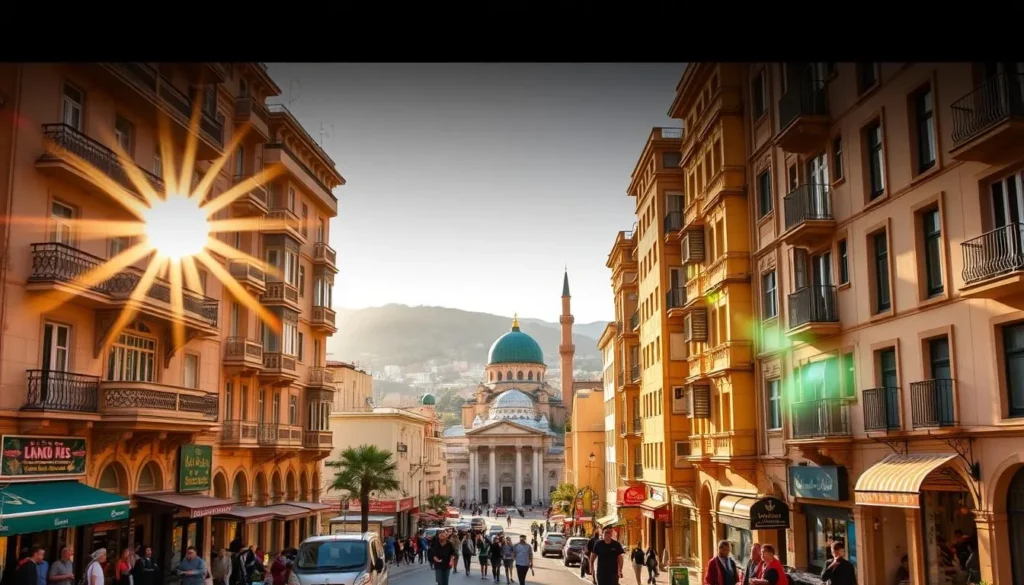
A City of Rich Cultural Heritage
Oran’s history is a story of multiple influences, from the Roman Empire to the Spaniards, Ottomans, and French. This diverse heritage is reflected in the city’s cultural identity, making it a fascinating place to explore.
The city’s cultural richness is evident in its various traditions, festivals, and architectural landmarks. You’ll discover how different cultures have blended together to create a distinct Oranese identity.
The Blend of Architectural Influences
The architecture in Oran is a testament to its complex history, showcasing a blend of styles from different periods. Some key features of Oran’s architectural landscape include:
- A mix of Spanish, Ottoman, French colonial, and traditional Algerian architectural styles.
- The coexistence of different architectural styles, creating a unique visual identity.
- 19th and 20th-century French colonial buildings contrasting with Ottoman and Spanish structures.
- Decorative elements showing Moroccan influence, particularly in religious buildings and traditional houses.
The city’s architecture tells the story of its history, with each ruling power leaving its mark. You’ll appreciate how modern Oran continues to develop while preserving its architectural heritage.
Fort Santa Cruz: Oran’s Iconic Landmark
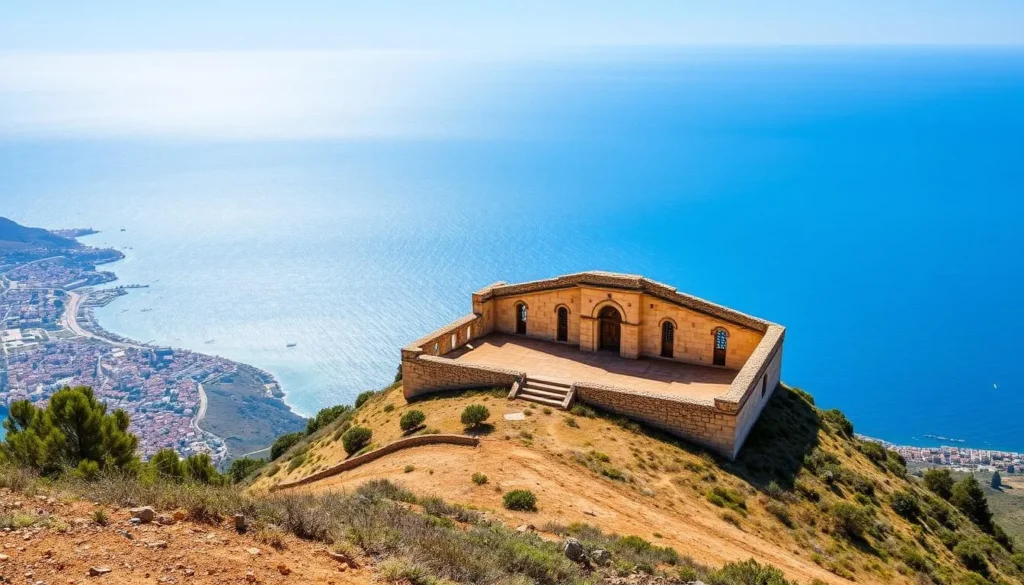
Perched atop a hill, Fort Santa Cruz stands as a testament to Oran’s rich history and architectural splendor. As you explore this iconic landmark, you’ll uncover the layers of history that have shaped the city.
The History Behind the Fortress
Fort Santa Cruz has been a silent witness to the rise and fall of empires, its walls bearing the scars of time. The fort’s history is intertwined with that of Oran, reflecting the city’s strategic importance and cultural diversity. As you walk through its ancient corridors, you’ll feel the weight of history and the stories that the fort has to tell.
The fort’s architecture is a blend of different styles, reflecting the various cultures that have influenced Oran over the centuries. From its imposing walls to the Chapel of Santa Cruz within its premises, every aspect of the fort tells a story of the city’s past.
Tips for Visiting Fort Santa Cruz
To make the most of your visit to Fort Santa Cruz, plan ahead. The fort is located high on a hill, and you’ll need to arrange for transportation from the city center. A taxi ride will cost around 1000da, or you can use the Yassir app for approximately 600da.
- Visit early in the morning to avoid crowds and enjoy a cooler experience.
- Wear comfortable shoes due to the uneven terrain and steep steps.
- Bring water and snacks, as options within the fort are limited.
- Don’t miss the breathtaking views of Oran and the Mediterranean Sea.
- Consider hiring a local guide to enrich your understanding of the fort’s history.
By following these tips, you’ll be able to fully appreciate the beauty and historical significance of Fort Santa Cruz, making your visit a memorable experience.
Place du 1er Novembre: The Heart of Oran
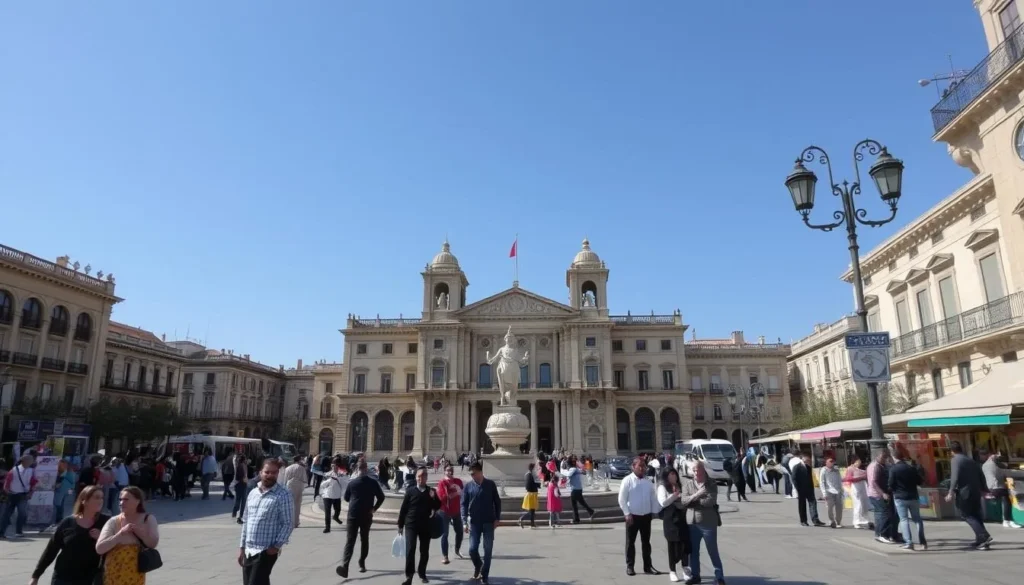
Place du 1er Novembre is the pulsating center of Oran, where history and culture converge. As you stand in this historic town square, you’ll be surrounded by impressive colonial-era buildings, each telling a part of Oran’s architectural story.
The Historic Town Square
The square is a significant landmark in Oran, reflecting the city’s rich cultural heritage. You’ll notice the town hall, Dar el-Bahia, with its distinctive lion statues, symbolizing Oran’s historical connection to these majestic animals that once roamed the region. According to legend, lions lived in the area until around 900 AD when the last two mountain lions were hunted.
Notable Buildings Around the Square
The magnificent Oran Theater, or Théâtre d’Oran, dominates one side of the square with its neoclassical façade, making it worth checking out even if you can’t attend a performance. The buildings around Place du 1er Novembre create a cohesive architectural ensemble that makes this area particularly photogenic. You’ll appreciate the French colonial influence evident in the buildings’ design, with their ornate facades and European architectural elements.
The square is surrounded by cafés and restaurants where you can relax and people-watch while taking in the historic atmosphere. As you explore Place du 1er Novembre, you’ll find that it’s a perfect spot to experience the essence of Oran’s city center, with its blend of history, architecture, and vibrant cultural life.
The Cathedral of the Sacred Heart
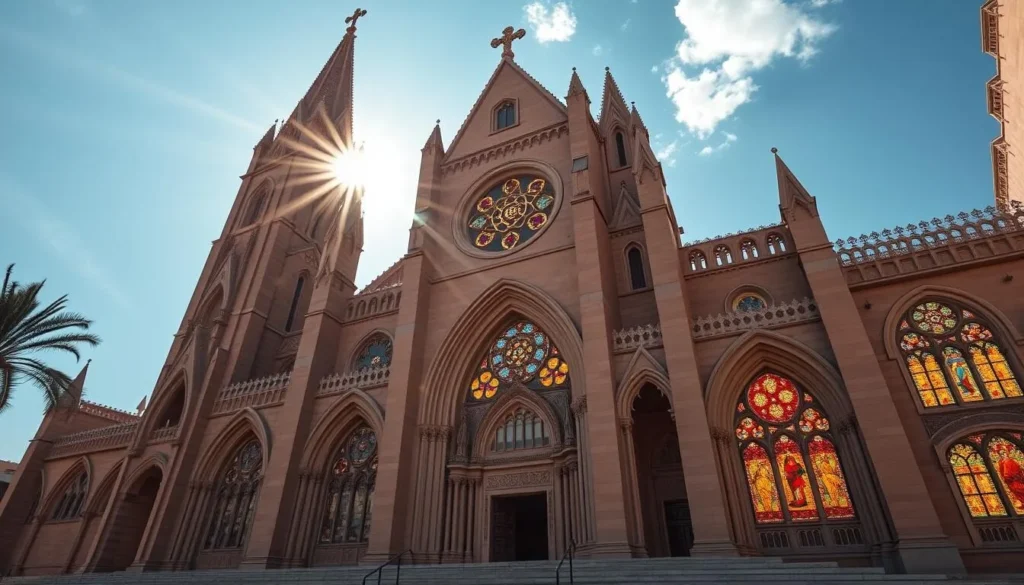
Oran’s Cathedral of the Sacred Heart, with its stunning stained-glass windows and beautiful views of the Mediterranean, is a cultural and architectural gem. Perched on Santa Cruz Hill, this historic landmark offers a unique blend of history, architecture, and natural beauty.
Architectural Marvel and Cultural Symbol
The Cathedral of the Sacred Heart is an exemplary model of neo-Gothic architecture, characterized by its intricate details and stunning stained-glass windows. As a cultural symbol, it represents the rich heritage of Oran, making it a must-visit attraction for anyone interested in history and architecture. You can appreciate the cathedral’s beauty by taking a leisurely walk around its exterior and interior, noting the intricate stone carvings and the dramatic effect of the stained-glass windows during different times of the day.
Visitor Information and Photography Tips
To make the most of your visit, consider the following tips: Plan your visit during the early morning or late afternoon to avoid the heat and crowds, especially on weekdays. Dress modestly as a sign of respect for this historical religious building. Bring your camera to capture the cathedral’s stunning architecture, but be sure to check if photography is allowed inside. You’ll enjoy the beautiful views of Oran and the Mediterranean Sea from the cathedral’s location on Santa Cruz Hill. Allow at least 30-45 minutes to fully appreciate both the interior and exterior of this architectural marvel.
Some additional tips for your visit include visiting near sunset when the light illuminates the stained-glass windows most dramatically, creating a magical atmosphere inside. It’s also beneficial to learn about the cathedral’s history before your visit to better understand its cultural significance to the city of Oran.
Exploring Sidi El Houari: Oran’s Historic District
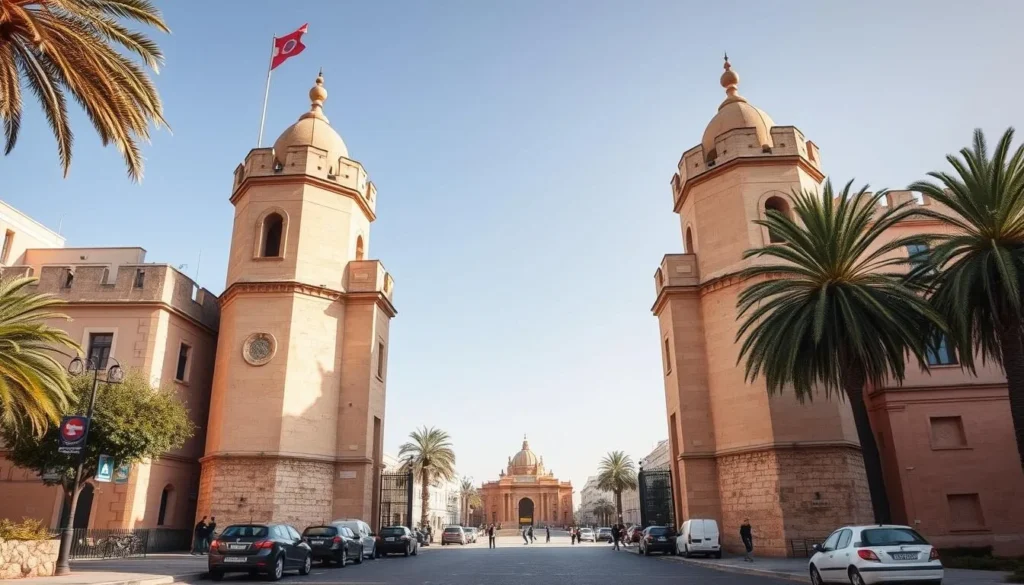
Step into Sidi El Houari, and you’ll be transported to a world of ancient traditions and rich cultural heritage. This historic district is a treasure trove of Oran’s past, with its narrow streets, charming plazas, and architectural landmarks.
Walking Through Centuries of History
As you walk around Sidi El Houari, you’ll discover the layers of history that have shaped the city. Begin your exploration through the historic Canastel Gate near Kleber Square, which serves as a symbolic entrance to Oran’s old quarter. The Turkish Baths, or Hamam, dating back to 1708, are a must-visit, showcasing the blend of Ottoman and French influences. You’ll see the original Ottoman architecture alongside French-era laundry machines, a testament to the city’s complex history.
Must-See Spots in the Old Quarter
Some of the top spots to explore in Sidi El Houari include the abandoned Church of St. Louis, the Square de la Perle, and the mausoleum of Sidi El Houari himself. The Spanish Gate, or Porte d’Espagnole, is another highlight, showcasing one of the best-preserved examples of Spanish architecture in Oran. As you wander the narrow streets, you’ll uncover hidden corners and discover the unique architectural style that reflects the city’s cultural heritage.
As you explore Sidi El Houari, you’ll gain a deeper understanding of Oran’s history and the cultural influences that have shaped the city. Take your time to walk around, absorb the atmosphere, and appreciate the beauty of this historic district.
The Bey’s Palace: Ottoman Grandeur
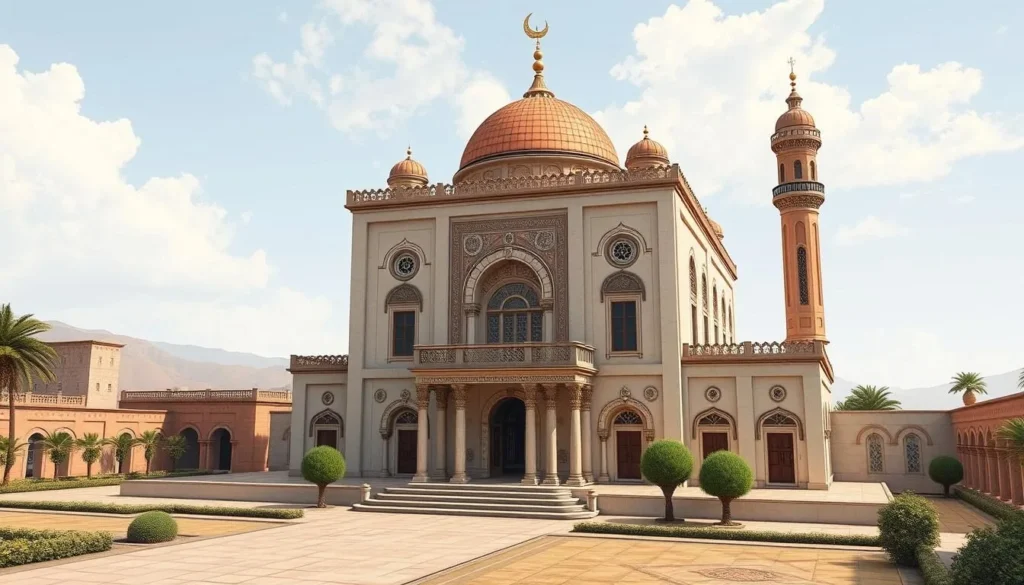
As you step into the Bey’s Palace, you’re transported to a world of Ottoman grandeur. This massive complex of fortifications is a testament to the region’s rich history and architecture. While parts of the complex belong to the military and are off-limits, you can still explore significant sections that reveal the palace’s former splendor.
The Story of Hassan the Tobacco Merchant
The Bey’s Palace has a fascinating story behind it, linked to Hassan the Tobacco Merchant, who played a significant role in Oran’s history. The palace’s original walls were built in the 1340s by Merinid Sultan Abou Hassan, marking the beginning of a rich historical journey for this magnificent structure.
Exploring the Palace Complex
As you explore the palace, you’ll be impressed by its scale and the grandeur of Ottoman rule in Oran. You’ll marvel at the remains of the beautiful public reception room where the Bey once held court, featuring an ornate painted ceiling and the area where the throne once stood. The inner courtyard is another highlight, with its elaborate architecture, including the room of the favorite concubine with its stunning stucco walls and painted ceilings.
You’ll be walking through layers of history as you discover the palace complex, with the original walls dating back to the 1340s and later modifications by Spanish, Ottoman, and French rulers. The palace reveals the architectural preferences of each ruling power, creating a fascinating historical palimpsest that spans nearly seven centuries. You’ll also see evidence of the palace’s changing functions over time, including areas that served as prisons and stables during different historical periods.
Hassan Pasha Mosque: Architectural Splendor
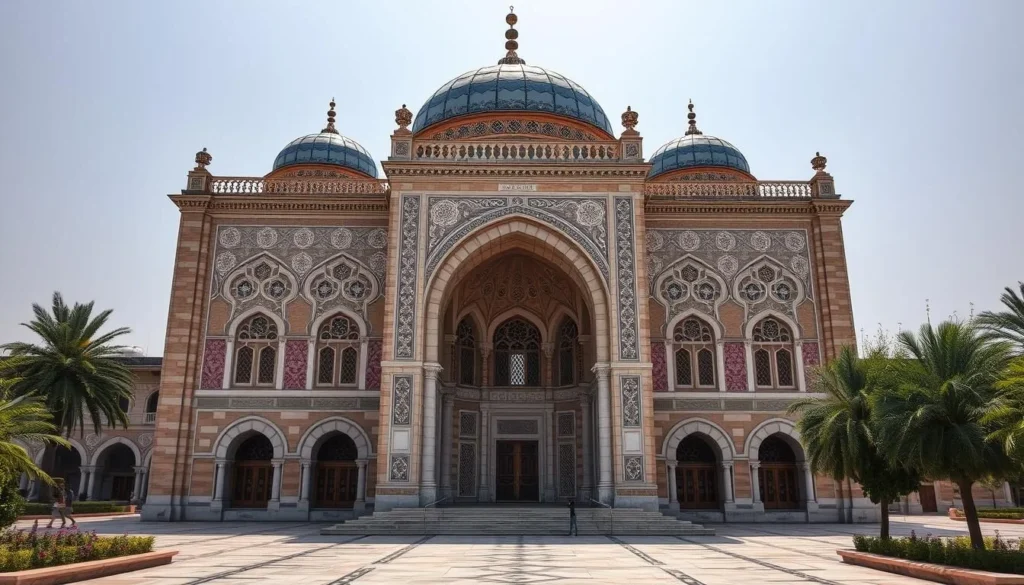
The Hassan Pasha Mosque in Oran, Algeria, is a stunning example of Ottoman architectural influence. Built with meticulous attention to detail, this mosque is a must-visit when in Oran.
Ottoman Influence and Design Elements
The mosque’s design reflects the classic Ottoman style, characterized by large domes and minarets. The intricate tile work and calligraphy adorning the walls and ceilings are testaments to the craftsmanship of the era. As you explore the mosque, you’ll notice the blend of traditional Ottoman elements with local architectural influences.
Visitor Etiquette and Best Times to Visit
When visiting the Hassan Pasha Mosque, it’s essential to dress respectfully, covering your shoulders and knees. Women should also cover their hair with a scarf. The best times to visit are typically mid-morning or mid-afternoon, avoiding the five daily prayer times. You’ll be expected to remove your shoes before entering the prayer hall, so wear footwear that’s easy to slip on and off.
- Dress modestly, covering your shoulders and knees.
- Visit during mid-morning or mid-afternoon to avoid prayer times.
- Remove your shoes before entering the prayer hall.
- Maintain a quiet and respectful demeanor.
The Oran Theater: A Cultural Landmark
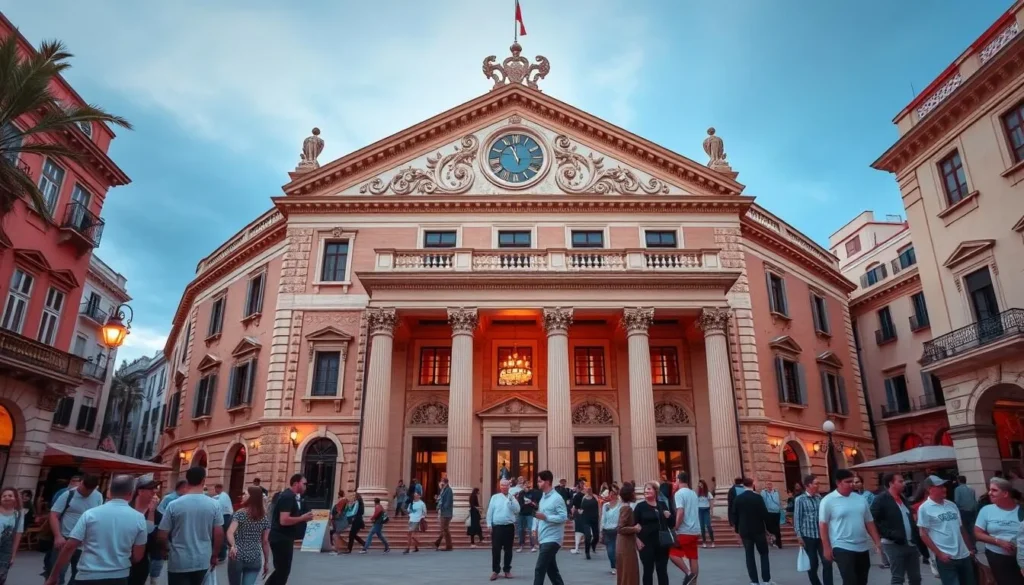
With its stunning architecture and diverse programming, the Oran Theater is a cultural gem in the heart of Algeria. The Théâtre d’Oran Abdelkader Alloula serves as a venue for a wide range of artistic performances, including plays, concerts, ballets, and various cultural events.
Neoclassical Beauty and Cultural Significance
The Oran Theater is not only an architectural marvel but also a significant cultural landmark. Its neoclassical beauty is a testament to the rich cultural heritage of Oran. The theater hosts a diverse range of performances, promoting culture and live arts throughout the year.
Attending Performances and Events
You’ll want to check the theater’s schedule before your visit to Oran, as attending a performance here offers a unique experience. The Théâtre d’Oran hosts festivals, theatrical performances, and musical shows featuring both local and international talent, giving you the opportunity to mingle with locals and gain insight into Oran’s contemporary cultural scene.
By attending an event at the theater, you’ll be experiencing the best of Algerian culture, with performances in Arabic and Berber, as well as contemporary works. With affordable ticket prices and a diverse range of events, the Oran Theater is a must-visit destination during your time in Oran.
The Museum of Modern Art of Oran
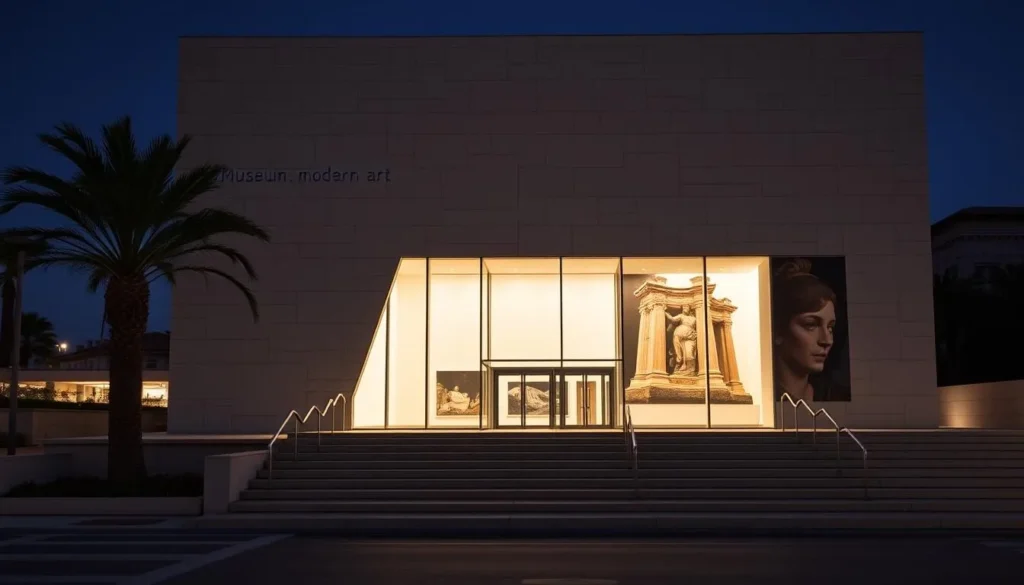
With its diverse exhibitions, the Museum of Modern Art of Oran offers an enriching experience for visitors from around the world. As you explore the museum, you’ll discover a wide range of contemporary art pieces that reflect the city’s cultural heritage.
Contemporary Art Collections
The museum’s contemporary art collections are a highlight, featuring works by both emerging and established artists. You’ll appreciate the diverse range of mediums and styles on display, from paintings to installations.
Exhibition Highlights and Visitor Information
To make the most of your visit, be sure to check the museum’s current exhibition schedule, as temporary exhibitions frequently change. You can easily spend 1-2 hours exploring the collections, and additional time if you wish to participate in any scheduled events or workshops. The museum is committed to being an active player in the regional and international art scene, organizing events that foster cultural exchange.
Plan your visit during the museum’s convenient opening hours, and take advantage of the educational programming offered, including workshops and lectures that provide deeper context for the artworks on display.
The Casbah of Oran: A Journey Through Time
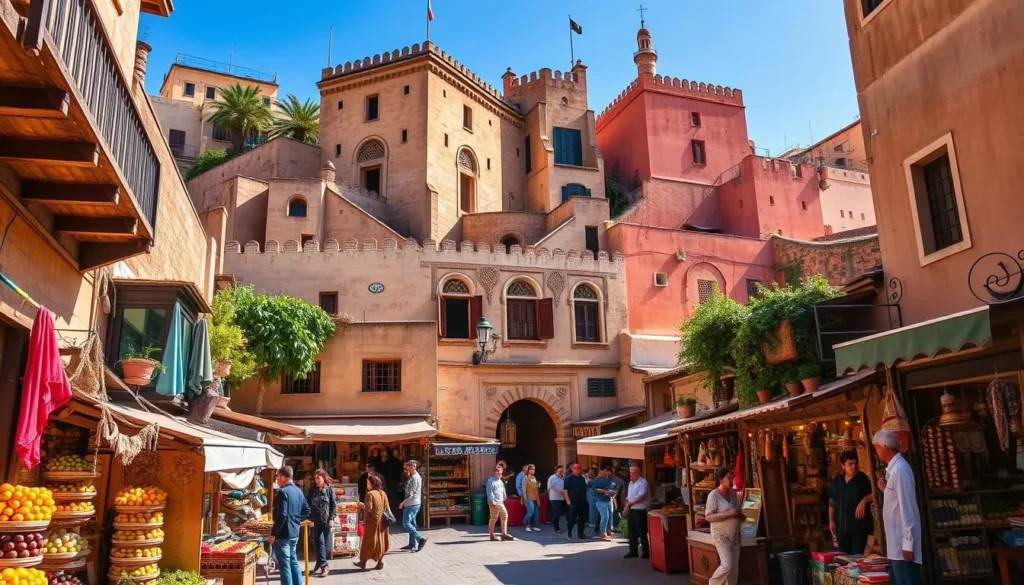
Oran’s Casbah is a labyrinthine district that promises an unforgettable journey through time. As you explore this historic area, you’ll discover a treasure trove of cultural experiences, from the vibrant atmosphere of the souks to the warm interactions with locals.
Navigating the Historic Alleyways
The Casbah’s narrow alleys are filled with hidden gems, from fragrant spice shops to artisans selling handmade crafts. As you navigate these historic passageways, you’ll be immersed in the rich culture of Oran, with its blend of traditional and modern influences.
Cultural Experiences in the Casbah
As you explore the Casbah, you’ll have a unique experience that combines history, culture, and entertainment. Be sure to sample traditional Algerian cuisine at one of the local eateries, and browse the colorful markets for souvenirs.
Some highlights of your visit to the Casbah include:
- Immersing yourself in the bustling souk, where vendors sell everything from aromatic spices to handcrafted souvenirs.
- Interacting with locals going about their daily lives, offering glimpses into traditions that have been maintained for generations.
- Sampling traditional foods from small eateries tucked away in the Casbah.
- Enjoying the stunning panoramic views of the Mediterranean Sea and the wider city of Oran.
Madagh Beach: Coastal Paradise
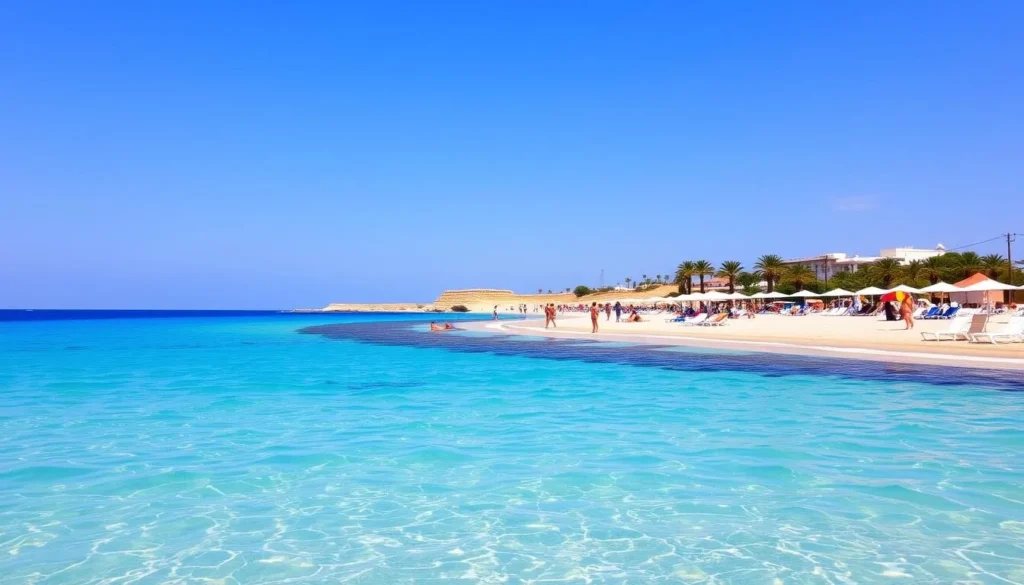
Madagh Beach is a stunning coastal paradise that offers a unique blend of natural beauty and exciting activities. The beach boasts clear waters and pleasant sea temperatures, making it an ideal spot for swimming and water sports.
Natural Beauty and Activities
Visitors to Madagh Beach can enjoy a range of activities, including jet-skiing, windsurfing, and scuba diving to explore the rich marine life. The beach is also dotted with small huts and cafes that offer refreshments and simple meals with fantastic views of the surroundings.
You can take advantage of the rental services available for umbrellas and lounge chairs, allowing you to relax comfortably on the beach.
Practical Tips for Beach Visitors
To make the most of your day at Madagh Beach, arrive early to secure a good spot, especially during summer months and weekends. Bring essential supplies, including water, snacks, sunscreen, a hat, and sunglasses, to stay hydrated and protected from the sun.
Consider visiting on weekdays rather than weekends to avoid the crowds, and be sure to respect the environment by not leaving any waste behind.
The Palace of Culture (Dar el-Hana)
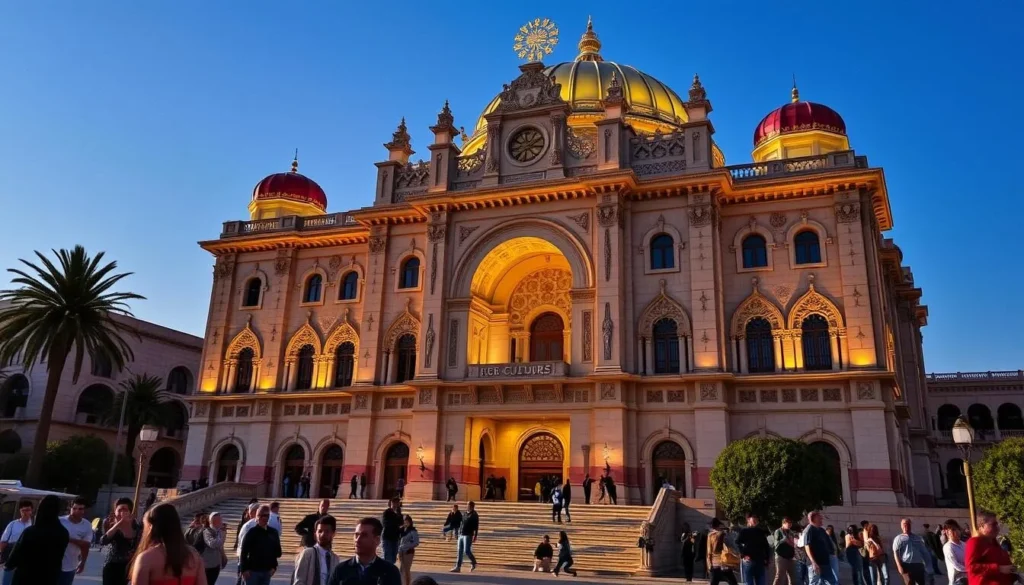
Oran’s Palace of Culture, also known as Dar el-Hana, is a treasure trove of cultural experiences waiting to be uncovered. As you visit this iconic landmark, you’ll discover a rich tapestry of art, history, and culture that reflects the city’s diverse heritage.
History and Architectural Significance
The Palace of Culture is not only a hub for cultural activities but also a symbol of Oran’s history. Its architecture reflects the city’s complex past, shaped by various civilizations over the centuries. The building itself is a testament to the city’s cultural resilience and diversity.
Cultural Events and Exhibitions
The Palace of Culture hosts a diverse range of events, including art exhibitions, concerts, dance performances, and film screenings. You’ll have the opportunity to engage with both local and international artists, experiencing the vibrant cultural scene that Oran has to offer. Some of the key events include:
- Art exhibitions showcasing works by Algerian and international artists
- Concerts and dance performances that highlight traditional and contemporary arts
- Film screenings and conferences that promote cultural exchange
- Seminars and workshops that offer insights into the city’s cultural heritage
By attending these events, you’ll gain a deeper understanding of Oran’s cultural landscape and its significance in the region.
Castello Viejo: Exploring Oran’s Oldest Fort
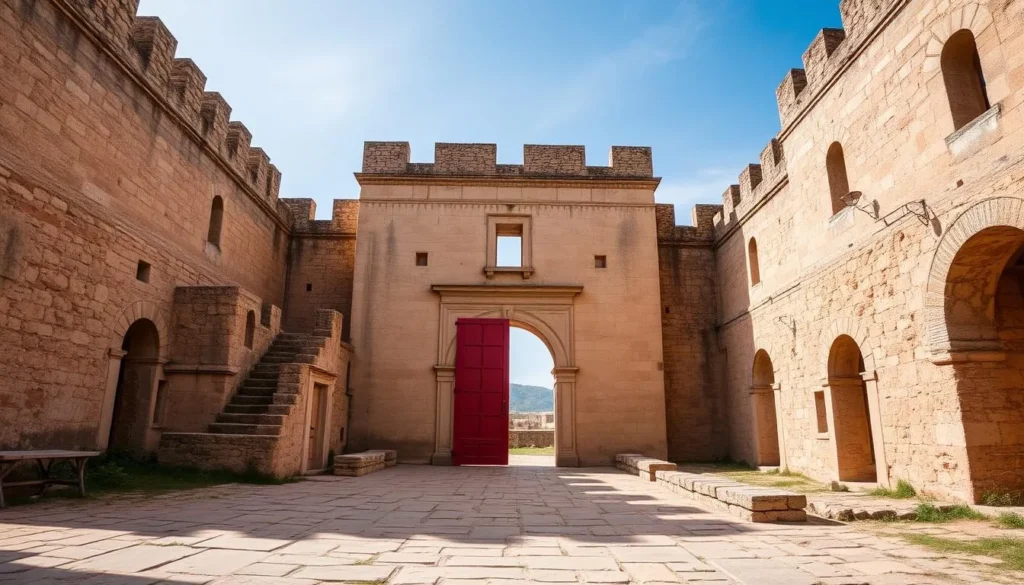
As you wander through Oran’s historic landscape, Castello Viejo stands as a testament to the city’s rich past. This ancient fort, built by the Spaniards, is a must-visit destination for anyone interested in history.
Spanish Heritage and Historical Significance
Castello Viejo, meaning “Old Castle” in Spanish, is a relic of Oran’s complex history. The fort has served various purposes, including as a prison during the French colony. You can still see drawings on the walls made by African prisoners, adding a poignant layer to the site’s history.
Navigating the Ancient Ruins
To make the most of your visit to Castello Viejo, wear sturdy shoes and bring a flashlight to explore the well-preserved tunnels. The site offers a unique experience, with fewer visitors than Fort Santa Cruz, allowing for a more authentic historical encounter. Be sure to take in the views from this elevated position and consider visiting before heading to Fort Santa Cruz to understand Oran’s defensive structures chronologically.
For a safe and enjoyable visit, explore the site during daylight hours and take your time navigating the uneven terrain. With about 30-60 minutes sufficient to explore the accessible areas, you’ll have ample time to absorb the history and significance of Castello Viejo.
The Corniche: Seaside Promenade with Stunning Views
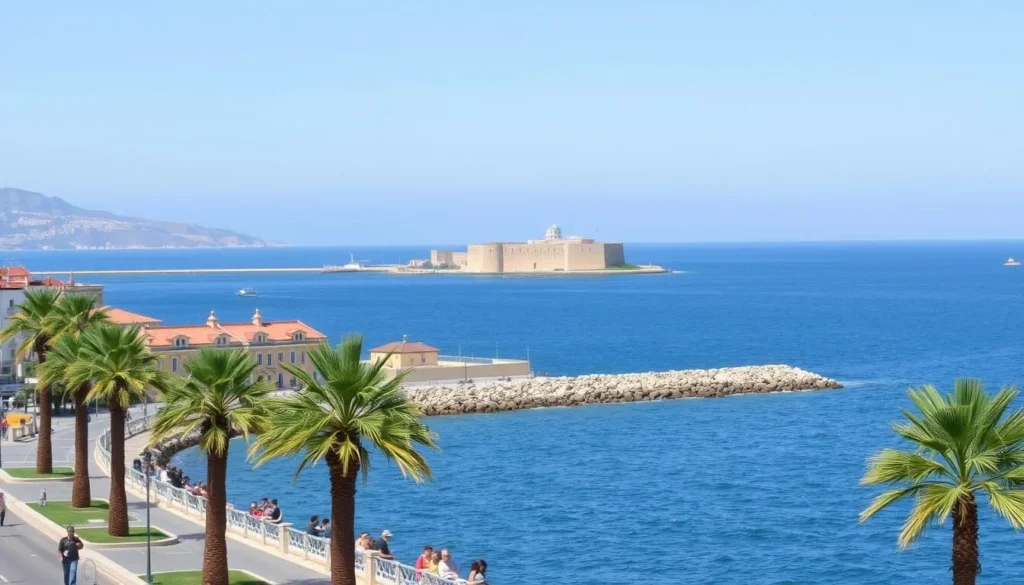
Oran’s Corniche is a seaside promenade that embodies the city’s Mediterranean charm and vibrant atmosphere. As you walk along the Corniche, you’ll be treated to stunning views of the sea and the city.
Enjoying the Mediterranean Atmosphere
The Corniche offers a unique blend of relaxation and entertainment. You’ll discover numerous cafés and restaurants along the promenade where you can relax with a mint tea or coffee while enjoying the sea views. The area is perfect for soaking in the Mediterranean atmosphere, with the sound of the waves and the warm sunshine.
Best Spots for Photography and Relaxation
You’ll find several perfect photography spots along the Corniche where you can capture breathing views of the Mediterranean Sea with Fort Santa Cruz in the background. The elevated sections of the Corniche provide panoramic views encompassing both the coastline and the city sprawling up the hillsides. Don’t miss photographing the port area at night when the lights of the city reflect on the water, creating a magical atmosphere.
Practical Information for Visiting Oran, Algeria: Best Things to Do – Top Picks
As you plan your trip to Oran, Algeria, having the right practical information can make all the difference. Oran is a city that offers a blend of history, culture, and natural beauty, making it an exciting destination for tourists.
Best Time to Visit Oran
The best time to visit Oran is during the spring or autumn when the weather is mild and pleasant. These seasons are ideal for exploring the city’s historic sites and enjoying the outdoors. Summer can be quite hot, while winters are generally mild but can be rainy.
| Season | Weather | Activities |
|---|---|---|
| Spring | Mild and pleasant | Explore historic sites, enjoy outdoor activities |
| Summer | Hot | Beach activities, enjoy the Corniche |
| Autumn | Mild and pleasant | Explore the city, visit cultural events |
| Winter | Mild but rainy | Visit museums, indoor cultural activities |
Getting Around the City
Oran is relatively easy to navigate, with various transportation options available. You can use taxis, buses, or rent a car to get around. For a more authentic experience, consider walking through the historic districts like Sidi El Houari.
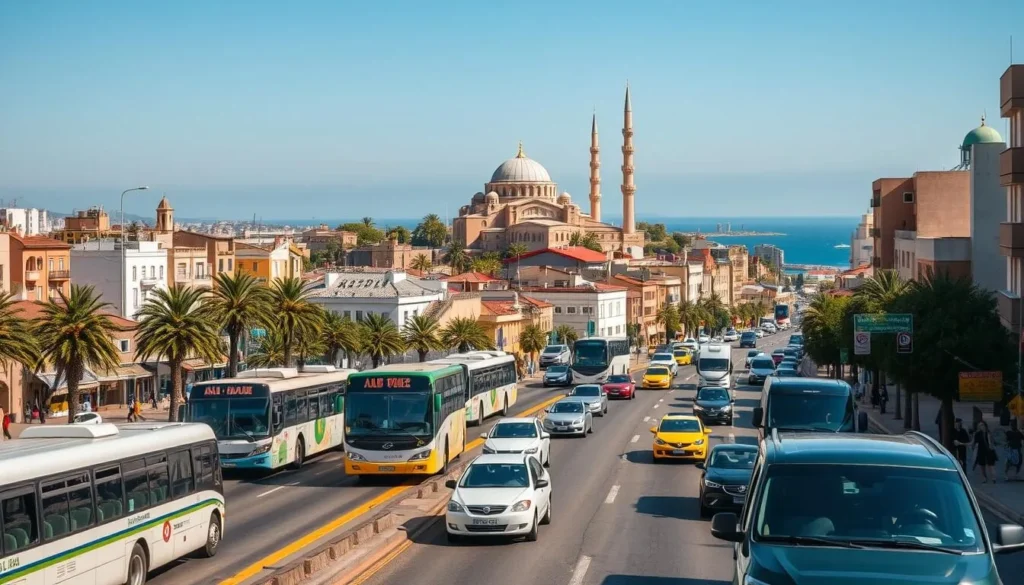
Safety Tips for Tourists
Oran is considered relatively safe for tourists, with low rates of violent crime. However, it’s always wise to take standard precautions to ensure your safety. Avoid walking alone at night, especially in poorly lit areas, and be mindful of your belongings in crowded places. Dressing modestly is also advisable to respect local customs.
- Be cautious of overly insistent “guides” who approach you unsolicited.
- Keep digital and physical copies of important documents like your passport.
- Learn a few basic phrases in Arabic or French to show respect for the local culture.
By being informed and taking a few simple precautions, you can have a safe and enjoyable trip to Oran. The locals are generally friendly and helpful, adding to the city’s charm.
Conclusion
Oran, with its rich history and vibrant culture, stands out as a must-visit destination in Algeria. As you’ve explored this fascinating city, you’ve discovered why it’s known as the “Pearl of Western Algeria.”
The iconic Fort Santa Cruz and the historic district of Sidi El Houari are just a few examples of the many landmarks that showcase Oran’s diverse heritage. The Santa Cruz fort, perched high above the city, offers breathtaking views and a glimpse into the city’s past.
Oran’s rich history is complemented by its contemporary culture, from modern art museums to lively music scenes. The city’s ability to balance historical exploration with relaxation makes it an ideal destination for travelers.
Whether you’re drawn to architectural marvels or natural beauty, Oran caters to diverse interests. As you plan your visit, remember that the true magic of Oran lies in absorbing its unique atmosphere and connecting with its welcoming people.
In my opinion, Oran has much more to offer tourists than Algiers. It’s a shame that such a city with huge potential and rich history is not being fully utilized. What are your thoughts on exploring this hidden gem?
The above is subject to change.
Check back often to TRAVEL.COM for the latest travel tips and deals.
